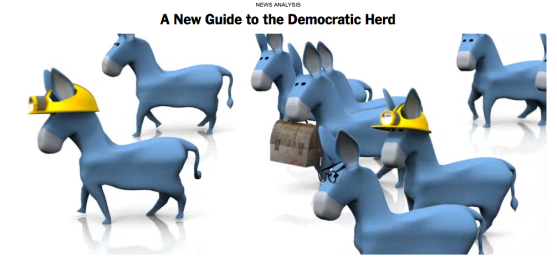A Fabulous Look into the Intersection of Cultures on the Frontlines in Afghanistan
September 27, 2012 § Leave a comment
“There is a great fascination with colorful flowers. And you’d often be patrolling through fields of high poppy or some brightly colored blossoms–and you’d turn around and half the [Afghan] patrol would have sort of plucked a flower and put it behind their ear or something…it was so anachronistic to hardened, 15-year veterans of the British Army…” “that is just a cultural difference.”
BBC Outlook’s Matthew Bannister meets the former British Army officer posted to Helmand Province to mentor members of the Afghan National Army. Patrick Hennessey’s book, Kandak: Fighting with Afghans is published on 6 September 2012.
The main story is only a few minutes long. There are two others worth hanging around for, however…especially if you love books.
September 27, 2012 § Leave a comment
Scholarships for African Students
I came back to Kinshasa: Tales of the Invisible City more than a year after I first picked it up and ended up admiring all the images rather than reading it. Kinshasa takes its title from Italo Calvino’s great paean to architecture and the human imagination, Invisible Cities. Specifically it is taken from the tale of Valdrada, a city on a lakeshore whose every building and happening is mirrored by the city reflected in the water. As Calvino writes, “The two Valdradas live for each other, their eyes interlocked; but there is no love between them.” Author Filip De Boeck and photographer Marie-Francoise Plissart use this as a starting point for their exploration of the connections between Kinshasa and a number of mirror realities: the city and the forest, Africa and Europe, the waking world and the world of spirits.
De Boeck and Plissart collected the stories and photos…
View original post 556 more words
Memory, Falsity and Justice
September 26, 2012 § Leave a comment
A recent study by scholars at Northwestern has found that memories tend to deteriorate, not improve and solidify, with each iteration of remembrance. I can’t say that this is unexpected, or that the proposition is particularly novel (I completed a capstone class on memory three years ago, the thesis of which was this exact point: memories change and slowly loose their grasp on ‘Truth’), but this study provides the first empirical evidence of an otherwise largely philosophical concept…and that is always exciting. In terms of legal justice, however, the implications may also be disturbing. “‘Maybe a witness remembers something fairly accurately the first time because his memories aren’t that distorted…After that it keeps going downhill” say the authors of the study. What does this mean for cases like Reggie Clemons‘, which have been protracted for decades without resolution, if not for those cases that have merely passed through the typically long processes of proceedings, processes and litigation that the US justice system demands?
Anyone who has studied the intricacies of a courtroom, or witnessed the tiny point upon which a verdict can spin, knows that such faults in memory can be fatal (metaphorically and literally in the US). Similar findings (such as the ability to plant false memories) have been and will continue to be discussed and studied. They are the fodder of theoretical and practical debate, and it will be interesting to see what implications they have on courtroom practice going forward. Will witness testimonies continue to be weighted less and less in the verdict, if not dismissed completely? Will we count this a good thing? Will there be exceptions? Are there already? And what of post-conflict courts such as the ICC? The implications could be massive.
Human nature hunts for truth–personally and collectively–but it always seems to get more complex the more you look for it.
Types in Party Politics
September 3, 2012 § Leave a comment
Gender and Health Data and Statistics: An Annotated Resource Guide
September 2, 2012 § Leave a comment
Warning: this post may seem to be exclusively for mild data-heads and public health professionals, but it’s not. It’s here to highlight and help us understand the importance of accurate, disaggregated (i.e. more individualized) data for public health and social problem interventions. Although data-heads and public health professionals may particularly benefit from access to reports such as the one highlighted here, we all benefit from their existence. As the world expands and complexities exacerbate, disaggregated data is essential for creating and adapting successful interventions–whether those be health programs, emergency-response protocols or child care facilities. And even more importantly, it is essential that we have measures (e.g. surveys) that provide us with accurate disaggregated data.
Think about it: if someone were creating a solution to a problem you had, wouldn’t you want them to have a correct understanding of what that problem was? And not only what it was, but how it manifested for you personally, as opposed to someone very different than you (e.g. your depression came out of nowhere, while someone else’s is clearly connected to the death of a loved one). This is where disaggregated data can help.
As the report website indicates, ‘The minimum requirement for a gender-based analysis is the availability of sex disaggregated health data. These data are collected in surveys and some routine health systems… However, many routine systems do not collect sex disaggregated data, or when they are collected, they are not analyzed and reported.” In other words, we often have data about a health problem, but we can’t tell if or how that problem effects men and women differently–either because we can’t break the data into ‘male’ and ‘female,’ or because the ‘male’ and ‘female’ data were not reported. “Even when these data are available, there is a lack of guidance and tools pertaining to conducting gender-based analysis….The success of health advocates, policy-makers and other stakeholders attempting to reduce gender-based health inequities depends on ready access to quality gender-related health information.‘
In simple words, the need for gender-related and gender-specific health data cannot be underestimated in regard to global health and (fundamentally) human rights. This annotated compilation of past surveys and indicators (the report above) by MEASURE Evaluation is a strong foundation from which to build as we move forward. Eventually, we will have more and better measures with which to inform our interventions and impact assessments (i.e. with which to create solutions and test whether they are working).
For data-heads: I can’t say that I found the search terms of this quasi-systematic review sufficiently thorough, but it does seem that they’ve searched the most highly relevant databases and websites. I will certainly use this report in my future research.




